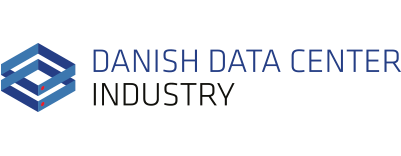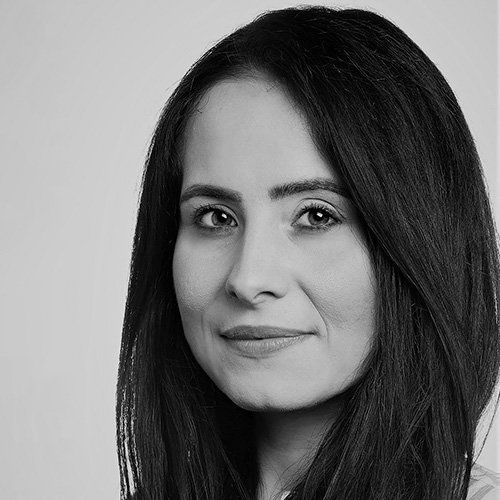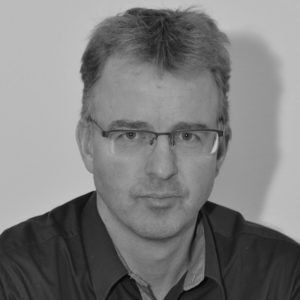The debate at the event went from “villains” to “electricity-racism” to talks about the “secret sauce” to success. But the focus was without a doubt on data center sustainability at every layer of the industry, spearheaded by the 40 international speakers of the day.
Data Centers Denmark took place in the UN City in Copenhagen, gathering a crowd of international data center professionals and over 280 attendees from 13 different countries.
The event was organized by the Danish Data Center Industry, in collaboration with UNEP-DTU Partnership, focusing on the design and build of sustainable data centers. A topic of various layers and nuances with many challenges today and in the near future, as we are faced with rapidly escalating global climate changes.
“The large hyperscale campuses are more energy efficient, than the ones that they are replacing”, said John Christensen, the Director of UNEP DTU Partnership.
“But the big question is whether we can work together with the demand side. My daughter for example, had never thought about how much CO2 emissions a tweet releases until I told her. Younger generations need to be made aware of the impact of data usage, and that each one of us can make a difference, but if you start to preach to the rest of the world, you may run into challenges”.
However, many indicators suggest that we can use data with a “clean” conscious – also in a future where the demand will keep increasing.
“We are committed to use 100 percent renewable energy by 2020 – and this goal is part of a larger project to reduce our CO2 footprint with 75 percent in 2020”, said Vince Van Son, Director of Energy and Infrastructure at Facebook.
In 2018, the goal for Facebook was 50 percent renewable energy, but they ended up reaching 75 percent, so the company is well underway to reach its 100 percent green energy target.
“Power purchase agreements are an important tool for us, and they often are the driving force behind getting new renewable energy projects to succeed without any environmental costs”, added Van Son.
To illustrate the growth, and the challenges with renewable energy, he outlined in his presentation how Facebook currently has more data centers under construction than in operation. But the company’s solar and wind energy usage is increasing rapidly. A great example here is Facebook’s Odense data center in Denmark, which will use green power sources from Norwegian windfarms.
“We have financed the production and the connectivity links, and in doing this, we are supporting the target set by Denmark to use more green energy from offshore wind power. All of our investments are made voluntarily and are not supported by any public funds”.
”The purchase of renewables by companies helps to lower the costs for all consumers. Our actions are removing barriers and inspiring others,” said the Facebook executive.
The first panel debate of the day was moderated by Stanford University’s Susanna Kass, who asked representatives from Microsoft and Google, about their approach to sustainable consumption.
“Mankind is undergoing a significant change right now, as we navigate the new industrial revolution, and in the center of it all is the data center. Think of the old factories with smoke coming out of the chimneys – we can learn from the past and design sustainability into the process from the very beginning,” said Sean James, Head of Energy Research at Microsoft.
Microsoft decided to build its own data centers in 2007. Operating at a larger scale makes more sense from an energy efficiency perspective, and the IT giant is putting a lot of its efforts into R&D, for example utilizing liquid cooling to cool down its server and using PPA’s to purchase renewable energy.
“I am very proud of the commitment into renewable energy by the data center industry. The industry is not told to do this by directives or legislations, we are doing this by our own initiatives, and we are very dedicated to the cause. Anyone at Microsoft who makes any decisions, is able to immediately see their CO2 footprint in their own accounts – whether we are talking about a building project or a trip to Europe,” adds Sean James.
Google is equally working hard to reach 100 percent renewables in its own data centers.
”We also need to account for other regions, where the climate is warmer and has limited access to renewables. Therefore, we cannot guarantee that our data centers in those regions use renewable energy 24/7, but it is our long-term goal,” highlighted Alaa Salama, Program Manager for Data Center Sustainability at Google.
 “In Finland, we have reached around 99 percent green energy, whereas in places such as Iowa it is a different story. We are also looking into onsite energy production. In Belgium we have around 10,000 solar panels installed at the data center, but this unfortunately only reaches around 3 percent of the total usage. We are committed to further invest in renewable energy and new innovations – every site has its own specific environment and a tailor-made approach on how we can reach our 100 percent green energy targets”.
“In Finland, we have reached around 99 percent green energy, whereas in places such as Iowa it is a different story. We are also looking into onsite energy production. In Belgium we have around 10,000 solar panels installed at the data center, but this unfortunately only reaches around 3 percent of the total usage. We are committed to further invest in renewable energy and new innovations – every site has its own specific environment and a tailor-made approach on how we can reach our 100 percent green energy targets”.
After the morning plenary sessions, the conference broke into two tracks, making room for various debates and case studies.
In one of the panel debates, Lars Aagaard, CEO of the Danish Energy Association, pointed that data centers can indeed contribute to balancing renewables.
“Can you help us make the consumption more flexible, so that we can invest less in network and backup? If the industry shows flexibility, it would be more significant in relation to energy storage, so that we can alleviate the very expensive demands during peak hours,” said Lars Aagard, who also commented on the political landscape.
”I am not a fan of those politicians who are exhibiting “electricity-racism”, which they do for some of the larger electricity consumers, who apparently have to pay higher fees than consumers who use traditional energy sources. The data center industry is a global one, and we should welcome the industry to our country should they wish to come here. Of course, they must pay for their own use of electricity and potentially assist in further developments in our energy networks”, added Aagard.
“If we want to set targets when it comes to renewables, then we need more production of RE if the demand goes up. But data centers are not the problem here – it is rather our target which is not intelligent enough. We really need to focus on placing data centers where it is most effective to operate them. We should accept a lower RE share in Denmark, if it means that the overall global CO2 emissions went down”.
Another panellist, EVP Mark Augustenborg Ødum from Better Energy, pointed that he sees opportunities rather than threats in the development of the industry.
“Digitalisation, e-mobility and all these connected devices will create far more data in the future, and all of this will consume more energy. However, we are fortunate enough in Denmark to have a unique mix of energy sources, where we essentially just need to build out the energy networks to balance the different sources of energy. We do have a unique proposition to create a power hub in the Nordics, because we have many different forms of energy combined in one region, and this is our opportunity to set the standard”, said Mark Ødum.
CEO of European Energy, Knud Erik Andersen agreed with the sentiment: “We are not asking for any contributions, we would just like to make use of a developed infrastructure, which we can plug into. Data centers have been the frontrunners on PPA’s, and we are now seeing SME’s following this trend. The data center is responsible for this very development,” adds Andersen, whose company made the first PPA 4 years ago.
“PPA’s were previously driven by subsidies and guarantees from the government. Now it is the norm as well as the obvious choice for businesses without the need for political intervention. Our society needs to be reminded of this fact”.
 The rest of the day offered many debates on how we can build and operate sustainable data centers. For example, panellist offered best-practices on how we can optimise the construction phase of a data center, where some shared what the “secret sauce” to success was. Knowledge-sharing and the industrialization of the construction phase with various technologies and techniques such as the modular approach, was discussed.
The rest of the day offered many debates on how we can build and operate sustainable data centers. For example, panellist offered best-practices on how we can optimise the construction phase of a data center, where some shared what the “secret sauce” to success was. Knowledge-sharing and the industrialization of the construction phase with various technologies and techniques such as the modular approach, was discussed.
“For data centers it is important that our industry becomes a circular one, where we reuse materials and create more of a standardized approach with far fewer resources. Many of the data centers which we are building now, will need an upgrade in 5 years’ time,” said John Sommer, Director at the Danish construction firm MT Højgaard.
Other talks focused on the demand side and the opportunities following the new international connectivity cable, linking Denmark directly with the US, named the “Mermaid” cable.
“I would like to see the industry utilize the Nordics as their next step in their build-outs with the stable connectivity links we are able to offer, “said Peder Nærbø, the CEO from colocation provider Bulk Infrastructure.
Nærbø is currently building a new colocation site in Esbjerg, which will directly be connected to the subsea transatlantic cable. Bulk is also one of the partners in the cable system.
 “In about 2-3 years’ time, we have brand new cables which will land in Esbjerg. We strongly believe that the Nordics will be the future engine room for the data center industry, with multiple connectivity points. We just need to enable this potential,” added Peder Nærbø.
“In about 2-3 years’ time, we have brand new cables which will land in Esbjerg. We strongly believe that the Nordics will be the future engine room for the data center industry, with multiple connectivity points. We just need to enable this potential,” added Peder Nærbø.
Should one doubt the pace of the growth, Susanna Kass from Stanford University illustrated a thought-provoking scenario for smart cities around the world.
“The data center of the future is not designed for humans. In 2030 we will have reached around 45 megabytes with more than 10 million citizens. On average an individual has now more than seven devices connected to the internet, whilst the figure is much higher in Asia,” said Susanna Kass on the basis of UN’s World Urbanization Prospects.
“The number of machine users on the internet will surpass 50 billion devices in 2020 already, and this is just a few months away. So be humble with these developments, innovate, collaborate, hire more women and engage with students. And remember, you don’t know, what you don’t know…”.


Contact us
ADDRESS
Erik Ejegodsvej 16
8800 Viborg
Tel: +45 7825 5151
Info@datacenterindustrien.dk
Danish Data Center Industry | Udviklet af ejlskov.design




